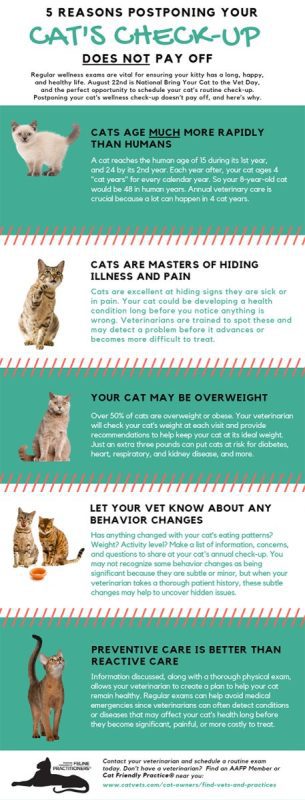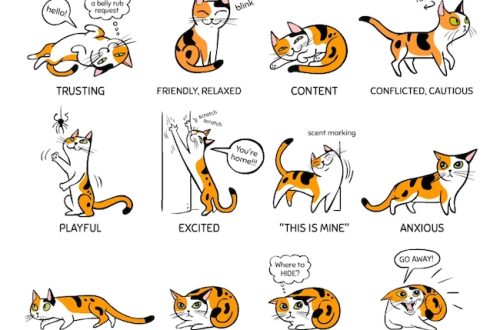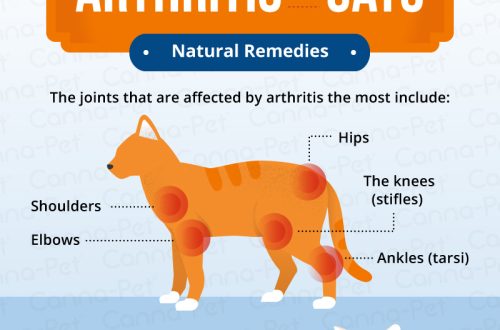
How to care for an old cat: preventive examinations and blood tests
If an aging cat appears healthy, it may be tempting to skip regular veterinary appointments. It is important to remember that looks can be deceiving. An older cat needs regular blood tests to check for common diseases. Why is it important?
Contents
Preventive check-ups for older cats
Cats age much faster than humans. Although this process occurs at different rates in different animals, depending on body weight and lifestyle, in general, a cat is considered to have reached middle age by its sixth birthday. By the age of 10, a cat is considered elderly.
At some point between these two milestones, usually around the age of 7, the cat should be taken for regular veterinary checks and tests. This should be done about every six months to detect diseases and other health problems that animals become more prone to developing with age. Checkups and blood tests every six months will give your pet the best chance of early diagnosis of various pathologies. In many cases, this can make treatment easier and more effective, and sometimes even save the cat’s life.
Common illnesses in older cats
Although a pet can get sick at any age, there are a number of ailments that cats become more susceptible to as they age. Chronic kidney disease is the most common, affecting 3 out of 10 cats, according to the Pet Health Network. Pain conditions commonly seen in aging cats include:
- Hyperthyroidism.
- High blood pressure.
- Obesity.
- Diabetes.
- Cancer.
- Development of functional insufficiency of various organs.
- Arthritis and other joint problems.
- Dementia and other cognitive disorders.
Old age in cats: blood tests
 Preventive checkups for older pets usually include a comprehensive blood test to look for common diseases. In most cases, they include a CBC and a blood chemistry test. Your veterinarian will take a urine sample from your pet to check kidney function and screen for urinary tract infections, certain types of cancer, and other diseases. They will do a separate test to check thyroid function. The cat can also be tested for symmetrical dimethylarginine (SDMA) to screen for kidney disease. This is an innovative test that detects kidney disease months or even years earlier than standard kidney screening methods, according to the Pet Health Network. Testing for SDMA can significantly improve prognosis of a pet in case of kidney problems It should be discussed if this test is included in the list of standard preventive tests for a cat.If not, it can be requested separately.
Preventive checkups for older pets usually include a comprehensive blood test to look for common diseases. In most cases, they include a CBC and a blood chemistry test. Your veterinarian will take a urine sample from your pet to check kidney function and screen for urinary tract infections, certain types of cancer, and other diseases. They will do a separate test to check thyroid function. The cat can also be tested for symmetrical dimethylarginine (SDMA) to screen for kidney disease. This is an innovative test that detects kidney disease months or even years earlier than standard kidney screening methods, according to the Pet Health Network. Testing for SDMA can significantly improve prognosis of a pet in case of kidney problems It should be discussed if this test is included in the list of standard preventive tests for a cat.If not, it can be requested separately.
Old cat: care and feeding
If a cat is diagnosed with a chronic illness, it is important to prepare for changes in her daily care routine. Depending on the nature of the disease, she may need to visit the veterinarian more often. In addition to medication, your veterinarian may prescribe a dietary food to help control her condition.
You will probably need to make some changes to the environment. For example, a cat with arthritis may need a new litter box with lower sides to make it easier for her to climb in, as well as a ladder so she can climb to her favorite spot in the sun. Whether or not an older pet is diagnosed with a chronic illness, it is important to monitor them closely and report any changes in weight, mood, behavior, and toilet habits to the veterinarian. Such changes may be symptoms of the disease. In such cases, you should not wait for a routine examination to show the cat to the veterinarian.
Some animals go through their old age without much or even no health problems. However, owners need to schedule regular check-ups and blood tests to detect any diseases in the cat in time. This will not only extend her life, but also improve its quality with the onset of adulthood. It is important that you consult with your veterinarian to ensure that your elderly pet is properly cared for.
See also:
Six Signs of Aging in Cats Cat Aging and its Effects on the Brain How to Switch Your Cat to Old Cat Food





